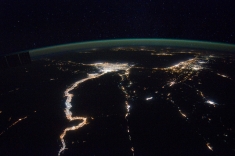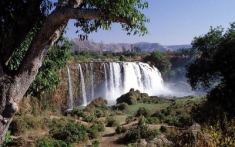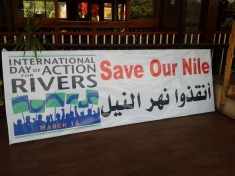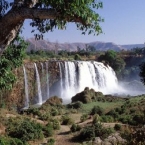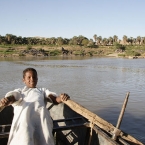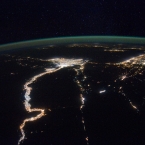20 Things You Didn’t Know About the Nile
1. The Nile is Africa’s longest river, covering 4,101 miles – roughly the distance of flying between Tahiti and San Francisco.
2. The Nile Basin covers nearly 10% of the landmass of the African continent, and is home to 160 million people.
3. The significance of the Nile can be traced backed to ancient Egypt. The rich agriculture along the riverbanks – and the wealth it generated – enabled the construction of the great pyramids of Giza.
4. The river got its English and Arabic names from the Greek word “neilos,” which means “valley.” The ancient Egyptians named the river “Ar” (“black”) because the annual floods would deposit black sediment in the fields.
5. In 1970, the Aswan High Dam was completed. It provides about half of Egypt’s power, and it curbed the river’s historic floods.
6. The flooding of the Nile was such a regular annual event that ancient Egyptians used it to create an incredibly accurate calendar.
7. The Nile gave rise to some of the world’s earliest cultures. In 1787, the Rosetta Stone was found in the Nile Delta city of Rosetta. This ancient artifact played a key role in helping anthropologists decipher Egyptian hieroglyphics.
8. In total, the Nile and its tributaries pass through ten countries in Central, Eastern and Northern Africa, providing food, water for irrigation, and transportation.
9. Dams have reduced the flow of the Nile so much that some areas are now experiencing drinking water shortages due to pollution.
10. Egypt’s Western Desert shows what the country would be without the Nile: rolling sand dunes, scorching heat, little vegetation, dust storms and locusts – with just a few oases.
11. Even today, a common Egyptian blessing is: "May you always drink from the Nile."
12. The Nile is home to an immense amount of wildlife: Hippos, black rhinos, the Nile Crocodile, amphibians, reptiles, snakes, birds and some unexpected animals call the river home.
13. The river sources its water from two tributaries: the White Nile, which flows from Lake Victoria (the second-largest freshwater lake in the world), and the Blue Nile, which flows from Lake Tana in Ethiopia (where it’s alleged that the Virgin Mary rested on her journey from Egypt).
14. No one had traveled the entire length of the Nile until 2004. It took two explorers four months to make the trip.
15. One of the explorers, Pasquale Scaturro, said the Nile was not the slow, lazy river he’d expected. "It has rapids, waterfalls, jungle, canyons, deserts, hippos, crocs, long flat beautiful sections, huge beautiful sandbars," he says. "There is no other river in the world that can compare."
16. The Nile has inspired art and literature from ancient times up until the present – most recently the Nile Project.
17. The Aswan Dam flooded 90,000 Nubians out of their ancestral homes.
18. All the nutrient-rich silt which once fed the fields is now trapped behind the dam, which is silting up. Meanwhile, farmers are forced to rely on expensive artificial fertilizers to substitute for the nutrients no longer in the flood plain.
19. Further downstream, the delta is eroding without its annual deposit of sediment.
20. International Rivers has worked to protect rivers – including the Nile – from destructive projects for 30 years and counting. Your donation will keep us going strong.


